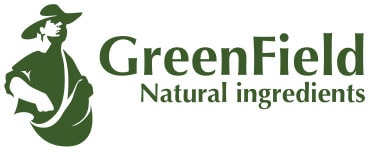Cocoa fibre powder – high fibre, clean label, low fat
At the beginning of October 2021 cocoa prices declined as a result of excess supply despite the year-on-year increase in grindings for the third quarter of 2021 reported by the main regional cocoa associations. While prices declined on the ICE Futures stock markets, cocoa grindings actually increased substantially in Europe, South-East Asia and North America, as represented by the European Cocoa Association (ECA) finding a year-on-year expansion of 8.7%. The Cocoa of Asia Association (CAA) reported a year-on-year increase of 4.1%. In addition, processing activities improved in North America during the third quarter of 2021 with the National Confectioners’ Association (NCA) reporting a 4.3% increase of cocoa beans being ground. At the end of the 2020/21 cocoa season, the cumulative grindings of ECA members amounted to 1,434,631 tonnes, an increase of 50,658 tonnes from the end of the previous season’s level. In South-East Asia, cumulative grindings increased by 3% year-on-year to 863,239 tonnes in 2020/21. Over the same period, grindings in North America increased by 6%.
The ICCO reported that in October 2021 prices of cocoa butter increased in the United States by 7%. In the same time prices of cocoa powder increased in the United States by 58% compared to previous year and by 27% in Europe. Some of our clients have also recorded an increase in cocoa powder prices on their markets and more and more of them are choosing to use cocoa fibre as a cocoa powder replacement.
Europe wants to introduce a ban on the importation of agricultural goods, the production of which has been devastatingly deforested or violating human rights. In 2018, only 23% of cocoa plantations in the world had an independent certificate relating to social, economic or environmental standards. If this law is introduced, some companies will have to cut off their relationship with cocoa suppliers. Cocoa producers would potentially have time to adapt to the new laws by 2024. This, unfortunately, creates a risk of rising cocoa powder prices.
GreenField produces cocoa fibre which is already widely used as a replacement of cocoa powder. The raw material used for the production comes from supplier who has two certificates:
- UTZ certification – covers 1.5 million hectares. This standard addresses both social and environmental aspects, including specific criteria related to deforestation and forest degradation.
- RFA certificate (Rainforest Alliance) – covers an area of 0.74 million hectares. Meets the standards of the Sustainable Agriculture Network, a set of ecological, social and economic criteria, along with special forest criteria.
Despite of the fairly high popularity of cocoa fibre among food manufacturers, many of them still do not realize that there are so many advantages to using cocoa fibre in food applications.
What are the advantages of using cocoa fibre?
What role plays the cocoa fibre in food applications?
Below we present information based on the experience of our customers:
- Cocoa fiber has a good roasty aroma and less bitterness than cocoa powder
- Cocoa fibre stabilizes the texture of the chocolate mass, preventing the mass from separating and precipitating fat
- Cocoa fibre increases fibre content in nutritional products like bars and cookies
- In our application cocoa fibre replaces part of cocoa powder decreasing fat content in the final product.
- Cocoa fibre improves crunchiness and freshness in our baked products. In some products we replaced 100% of cocoa powder.
- Cocoa fibre replaces a portion of cocoa powder without imparting as much bitterness in baked bars and candy bars
- Cocoa fibre is used in our chocolate ice cream recipes. Thanks to the fibre we were able to decrease cost of the production.
- Cocoa fibre has replaced cocoa powder in our cookies. By increasing the fibre content we have made the cookies healthier.
- We’ve added cocoa fiber to the cold-pressed bars to replace some of the cocoa powder and reduce the price.
- We have replaced part of cocoa powder in breakfast cereals (granola) and we work on creating alternative cocoa milk.
- Our project using cocoa fiber concerns dietary products (slimming products).


